As we move through the second half of 2025, cybersecurity trends 2025 reveal a rapidly evolving digital threat landscape. Cyberattacks are becoming more frequent and sophisticated. As a result, both organizations and individuals face increasing pressure to protect their digital assets. According to IBM’s 2024 report, the average cost of a data breach has soared past $4.45 million. Artificial intelligence is a double-edged sword. It powers advanced defense tools but also enables more complex cyber threats.
Understanding cybersecurity trends in 2025 is essential for everyone, not just IT professionals. Business leaders, regulators, and everyday internet users all play a role. From AI in cybersecurity to zero-trust architectures, the future of digital defense is already taking shape. Let’s explore the trends driving this transformation.
AI-Driven Threats & Defenses
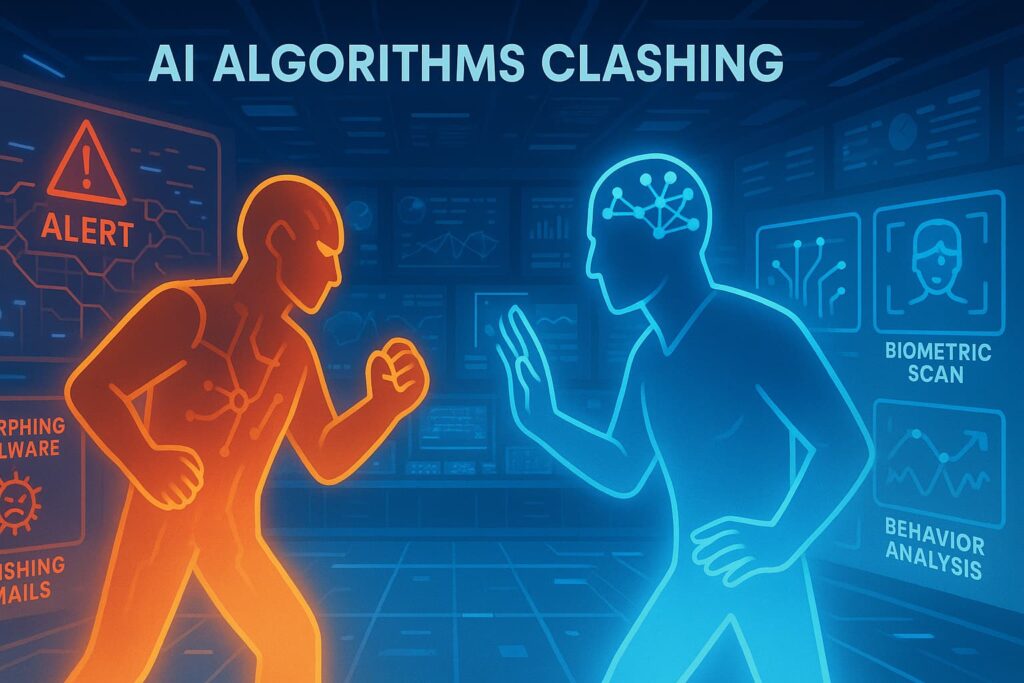
Artificial intelligence is revolutionizing both the offense and defense sides of cybersecurity. AI-driven threats are on the rise. One example is AI-powered malware that adapts in real time to bypass traditional defenses. Tools like SentinelOne’s threat detection report an increase in malware using generative AI to disguise itself.
Phishing attacks are now more convincing. AI-generated content mimics human behavior and language with near-perfect accuracy. A report from Fortra warns that these tactics are being deployed at scale, making it harder than ever to distinguish fake from real.
Fortunately, cybersecurity firms are fighting back. Companies like Palo Alto Networks, CrowdStrike, and Cloudflare are using machine learning in their security tools. These AI-powered systems help detect anomalies and spot breaches more quickly. They also reduce false positives through adaptive learning, according to investors.com.
AI is now used in behavior-based security models. These systems learn what “normal” activity looks like and flag anything unusual. This helps detect insider threats, compromised accounts, and lateral movement within a network.
💡 Related Read: Explore how AI is transforming everyday life in our post on The Rise of AI in Everyday Life.
Zero-trust & Continuous Exposure Management
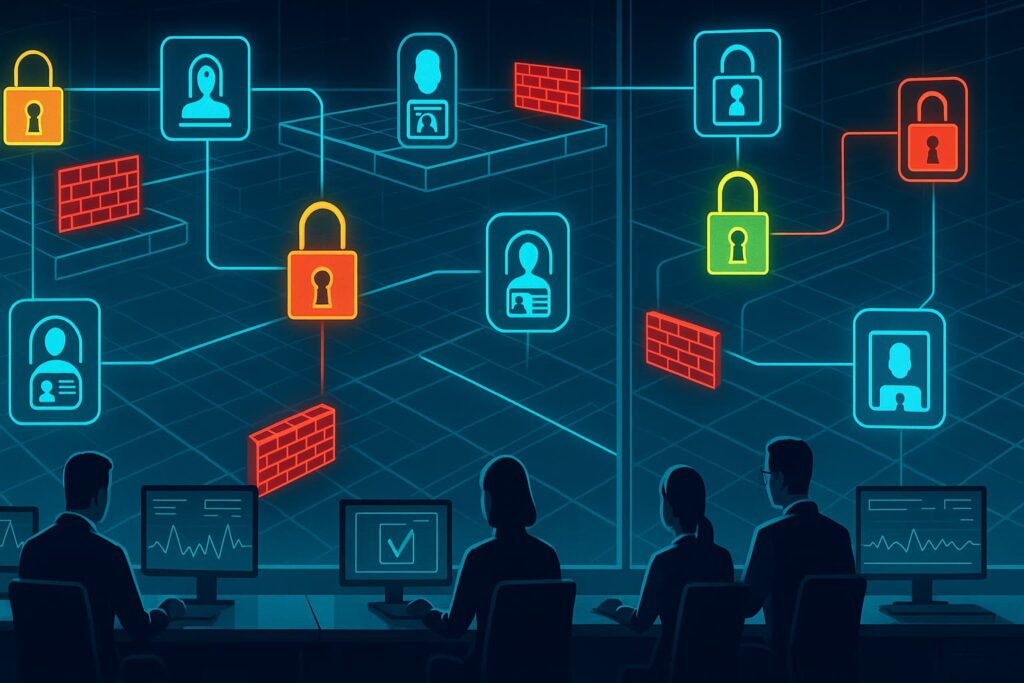
The shift toward zero-trust Architecture (ZTA) is gaining traction across industries. Zero-trust is becoming a key part of enterprise cybersecurity. This shift is driven by hybrid work and increased use of cloud services, according to Splashtop.
Zero-trust isn’t just a technology; it’s a mindset. It requires verifying identity at every access point. Networks are divided using micro-segmentation. Policies are enforced in real time.
Continuous Exposure Management (CEM) supports the zero-trust approach. It focuses on real-time detection of vulnerabilities instead of periodic checks. According to Wikipedia, CEM tools continuously assess an organization’s attack surface. This helps shrink the window of opportunity for attackers.
Zero-trust and CEM are shaping stronger, more responsive cyber defense strategies in 2025. Their adoption helps reduce the attack surface. They also boost regulatory compliance and speed up incident response.
🔒 Deep Dive: Learn how remote work is evolving in tandem with these security shifts in The Rise of Remote Work Worldwide.
OT & IoT Security Risks
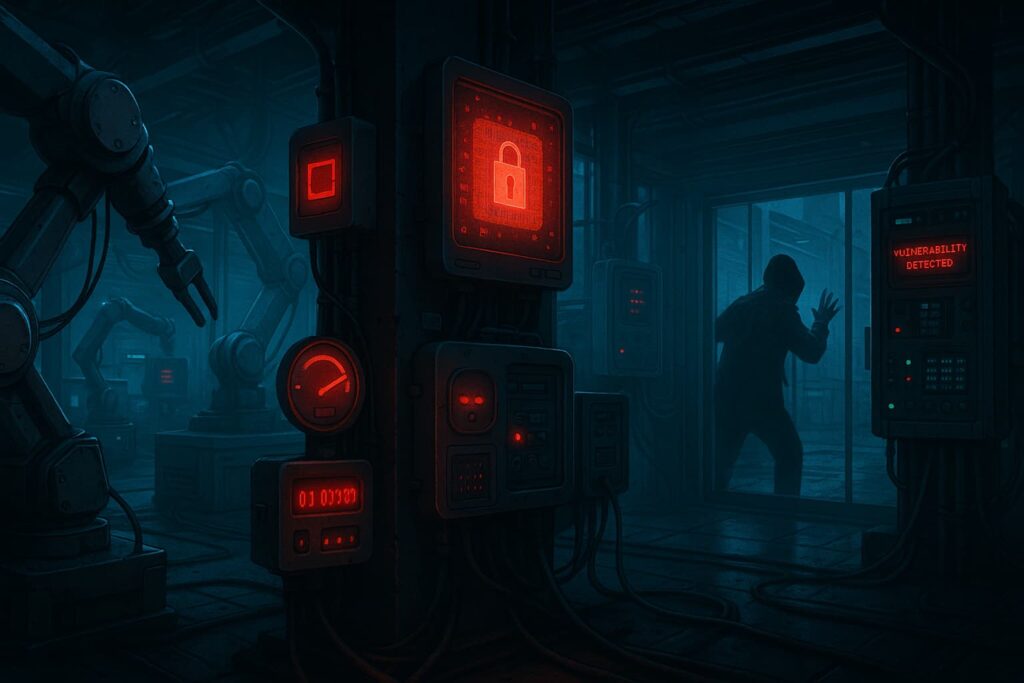
As industries grow more connected, OT and IoT devices face rising risks. The Colonial Pipeline attack was a major wake-up call. It showed how cyberattacks can disrupt critical infrastructure. Honeywell’s analysis warns of more threats ahead, especially in manufacturing, utilities, and transport systems.
Legacy OT systems often lack basic security controls like authentication and encryption. When connected to modern IT networks, they become easy entry points for attackers. Many IoT devices still use default passwords. Others lack proper firmware update options. This makes them easy targets for cyberattacks.
The rise of 5G and edge computing is increasing the risk for IoT devices. Smart meters, industrial controllers, and other devices are more exposed than ever. According to SentinelOne, weak edge device security can open the door to large-scale attacks. In 2025, strong endpoint protection, regular firmware updates, network segmentation, and anomaly detection will be essential.
📡 Don’t Miss: Our guide on The Future of Wearable Technology in 2025 covers the security implications of IoT devices in daily life.
Ransomware As A Service & Sophisticated Malware

Ransomware isn’t going away. It’s getting more organized. Ransomware-as-a-Service (RaaS) has turned cybercrime into a subscription-based model. It allows even non-technical criminals to launch advanced ransomware attacks.
SentinelOne reports that RaaS operators are making their methods more sophisticated. They use tactics like encryption-less extortion and double extortion. Their delivery methods are becoming harder to detect. Attackers are also going after smaller businesses and managed service providers (MSPs). These targets often have weaker security but still handle valuable data.
An alarming trend is the rise of modular malware kits. These allow attackers to customize payloads for different environments. In 2025, we can expect ransomware to be combined with data theft, reputation attacks, and insider collaboration.
📈 Insight: Want to learn how cybercrime intersects with financial scams? Read How to Identify and Prevent Online Financial Scams.
Regulatory Pressure & Cyber Resilience

Governments are stepping up their response. New regulations are raising the bar for cybersecurity. The NIS2 directive in the EU, the SOCI Act in Australia, and SEC rules in the US set strict standards. These include breach disclosure, risk governance, and supply chain security, as noted by Honeywell.
These rules are not just about compliance; they emphasize resilience. Companies must demonstrate that they can prevent, withstand, and recover from cyber incidents.
The UK’s Cyber Security and Resilience Bill focuses on national protection. It aims to ensure that critical infrastructure can withstand emerging cyber threats. This is outlined on Wikipedia. It mandates mandatory risk assessments, incident reporting, and governance oversight.
With rising regulatory scrutiny, organizations must act fast. They should use integrated risk management tools and automate compliance reporting. It’s also important to coordinate with legal and public relations teams.
📚 Context: See how regulatory tech decisions ripple globally in our post US Tech Policies Impacting the World.
Cybersecurity Workforce & Diversity
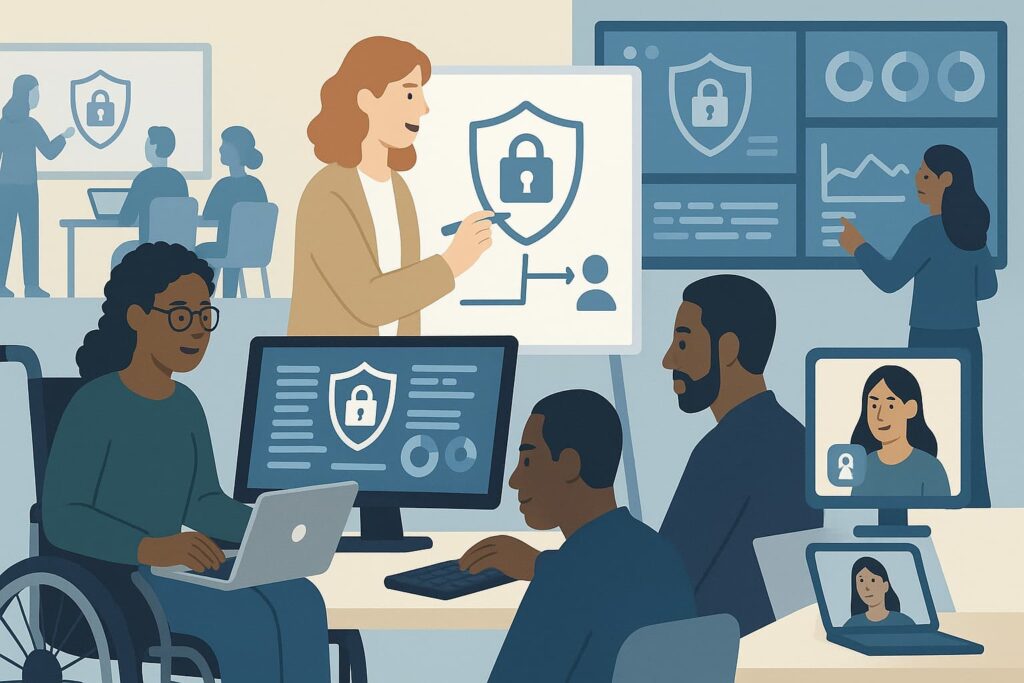
The demand for cybersecurity professionals continues to outpace supply. Global skills shortages are a growing problem. According to The Wall Street Journal, many organizations are turning to Managed Detection and Response (MDR) services. These services help fill the gap in cybersecurity expertise.
On a positive note, the field is becoming more diverse. Splunk’s diversity report shows more women are entering cybersecurity roles. This is leading to more inclusive teams and broader perspectives when tackling threats. Inclusive hiring and career development programs are also strengthening the talent pipeline.
Upskilling programs and cybersecurity bootcamps are helping close the talent gap. Certification platforms like (ISC)² and CompTIA also play a major role. Many universities are now including cybersecurity as a core part of computer science degrees. This prepares the next generation of digital defenders.
👩💻 Also Read: Learn how global market dynamics shape opportunity in Top Emerging Economies to Watch.
Future Outlook: Quantum Threats & Edge Security
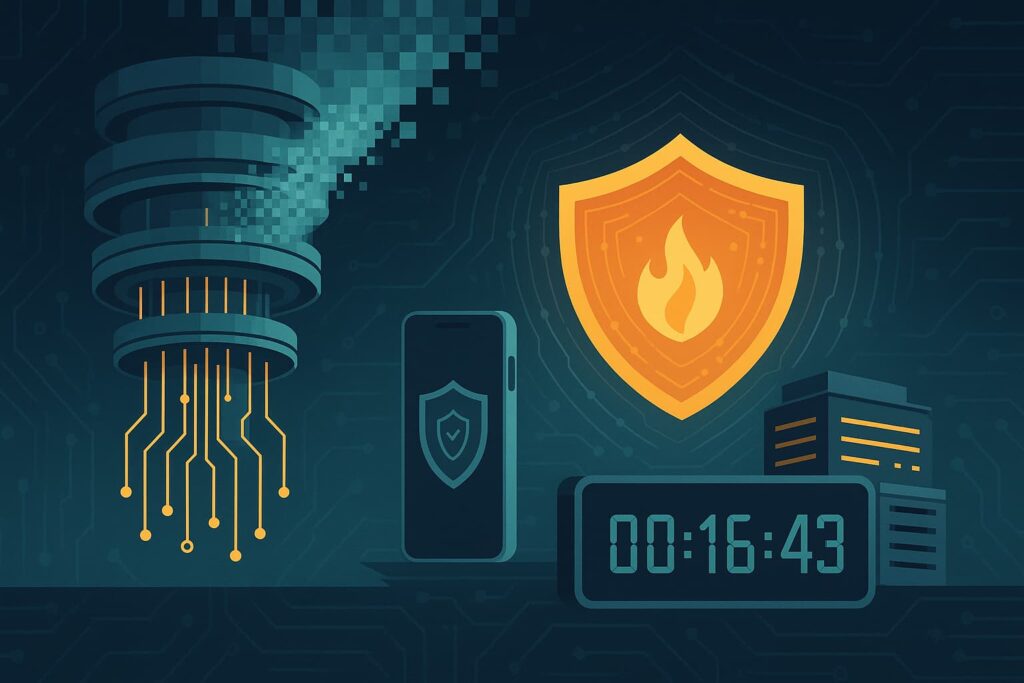
Looking beyond 2025, quantum computing poses a major threat to current encryption methods. Research from arXiv and SentinelOne warns that quantum-powered decryption could become possible within the next decade. This increases the urgency for post-quantum cryptography.
Organizations need to begin preparing by inventorying cryptographic assets and evaluating quantum-safe algorithms. NIST has already begun standardizing such algorithms to ensure future-proof encryption.
Meanwhile, 5G and Wi-Fi 6 will reshape network architectures. Calsoft Inc. highlights the need for strong edge security frameworks. These help prevent lateral attacks and data leaks at the network’s perimeter. As remote work, mobile devices, and edge data centers grow, securing the edge is now as critical as protecting the core.
🔮 Forecast: Explore broader impacts of global AI and tech in The Role of AI in International Relations.
FAQs
What is zero-trust architecture?
Zero-trust is a security model that assumes no user or device is trustworthy by default, even within the network. It enforces strict identity verification, minimal access privileges, and continuous monitoring.
Will AI replace cybersecurity professionals?
No. AI improves detection and automation. But human oversight, strategic planning, and ethical decision-making are still essential in cybersecurity.
How can small businesses prepare for OT threats?
Small businesses can start by segmenting their networks. They should secure all endpoints and keep software regularly updated. Using affordable monitoring tools designed for small-scale operations is also important.
Conclusion
The cybersecurity landscape in 2025 is both promising and perilous. AI in cybersecurity and zero-trust models are making defenses stronger. But threats like AI-driven malware, OT vulnerabilities, and Ransomware-as-a-Service continue to grow. Businesses need to stay alert. They should invest in modern tools. Teams need regular training. Applying layered security is key. Staying updated on cybersecurity regulations in 2025 is also essential.
🔗 Recommended Reading:
- The Rise of AI in Everyday Life
- US Tech Policies Impacting the World
- How to Identify and Prevent Online Financial Scams
Explore more at TechFinHub to stay ahead of global trends and security challenges.

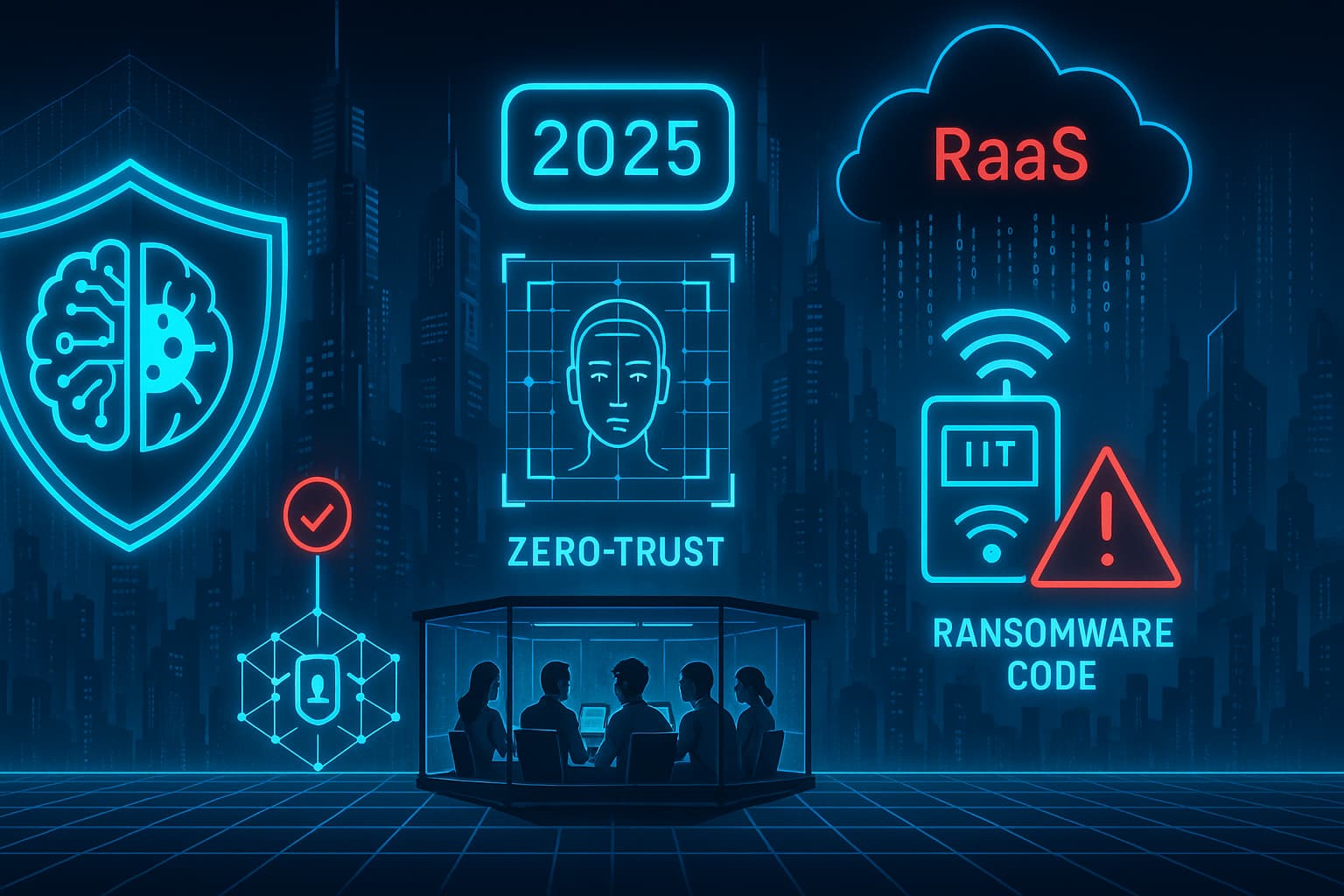
Leave a Reply